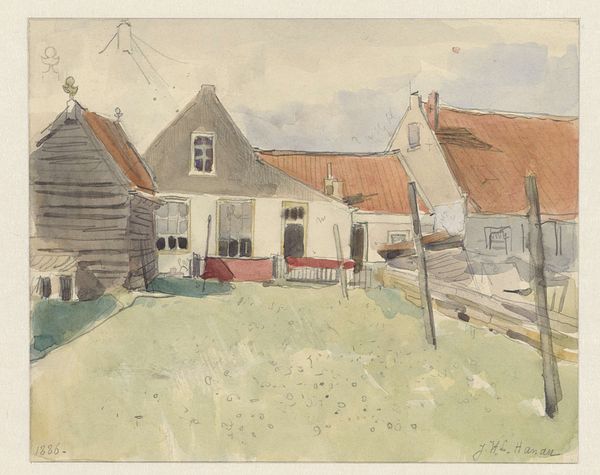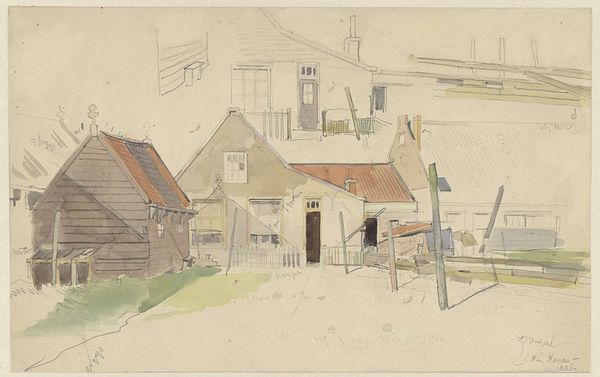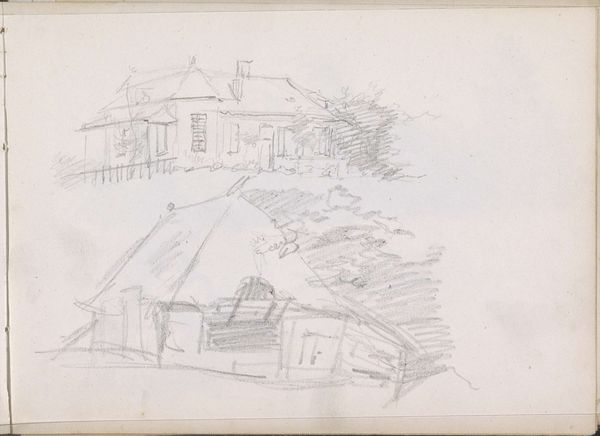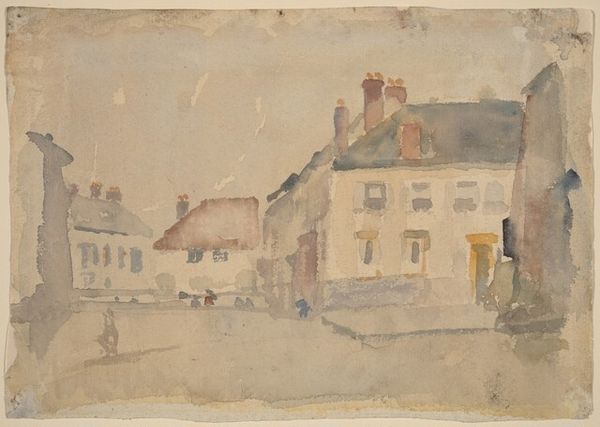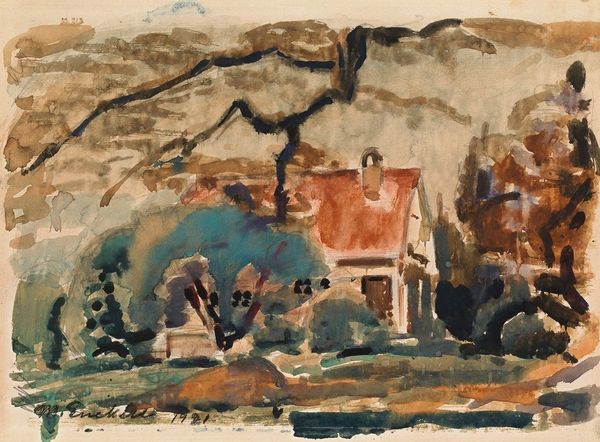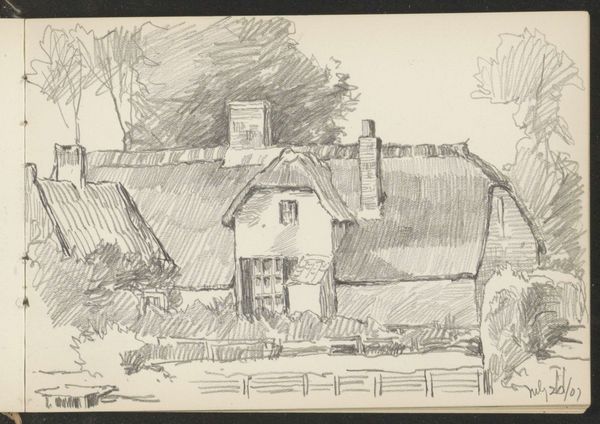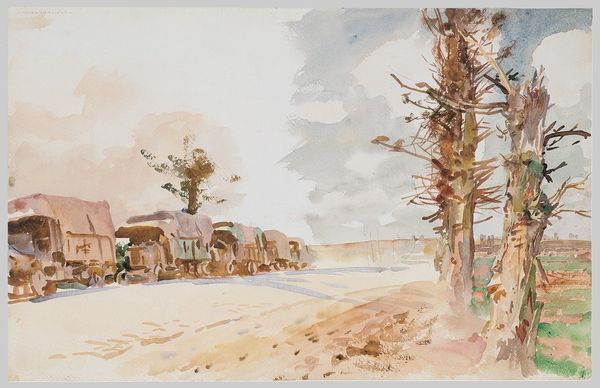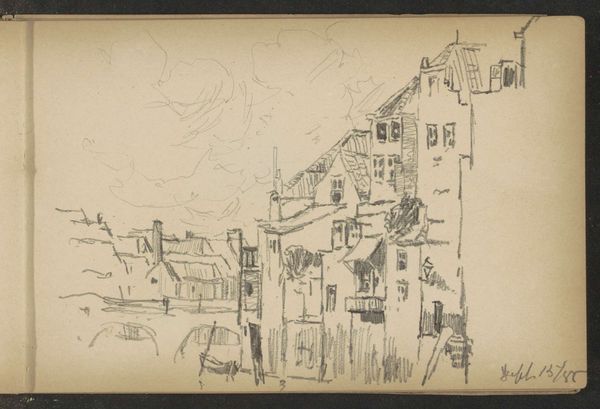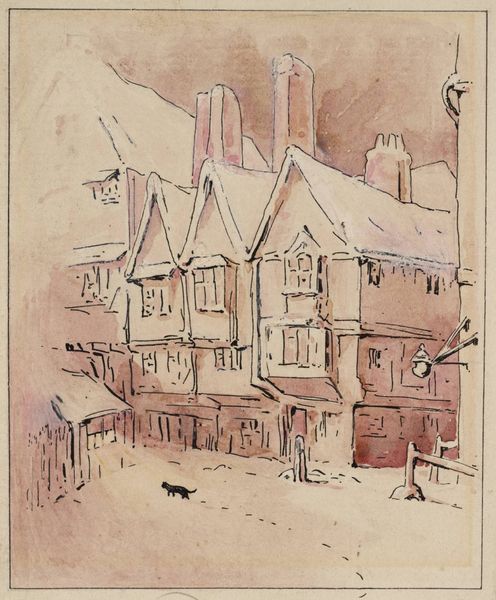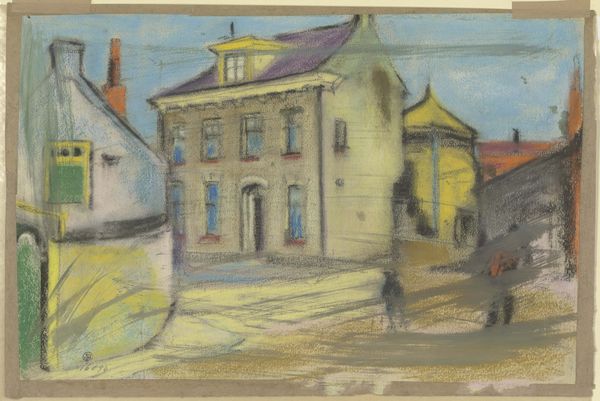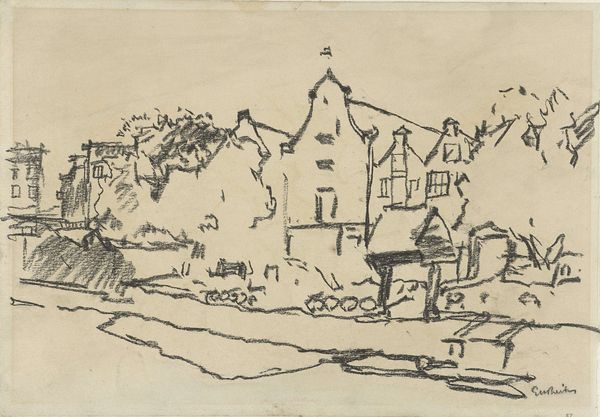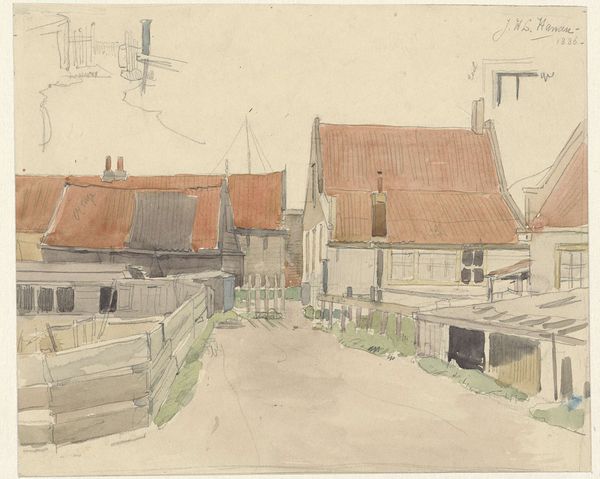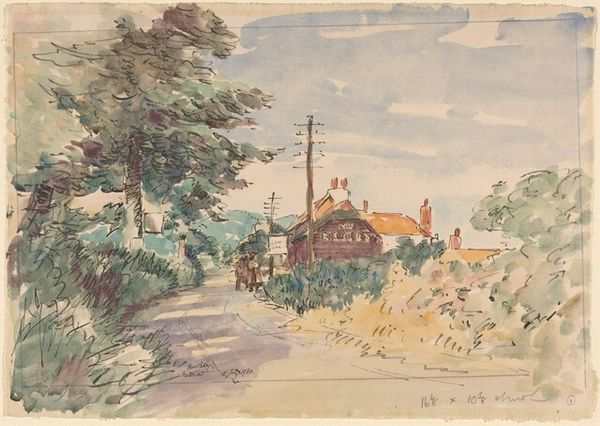
Dimensions: sheet: 35.88 × 39.69 cm (14 1/8 × 15 5/8 in.)
Copyright: National Gallery of Art: CC0 1.0
Editor: Here we have Stuart Davis's "Gloucester," a 1917 watercolor. There’s something about the muted tones that gives it a hazy, almost dreamlike quality, a memory more than a reality. How do you read the imagery here? Curator: Notice how the buildings are simplified, almost geometric? This speaks to a shift happening in art at the time – a move away from strict representation. Look closely at the composition. The artist presents what's knowable. What memories, what continuities might exist for you in a composition such as this? Editor: The ladders attached to the building really grab my attention; they create such strong lines, and are visually interesting. But is there something symbolic in such prominent positioning? Curator: Ladders often signify aspiration, journeys, connections between different realms. But here, also note how it's a very everyday, practical sort of ladder. It’s juxtaposed against this softened, impressionistic rendering of Gloucester. The artist draws attention to everyday lived moments that speak to broader cultural memories. What else stands out to you? Editor: I’m struck by the way Davis chose to focus on the back of the buildings. It's not the postcard view; it is, perhaps, more intimate. Curator: Exactly. We are drawn into the more intimate, perhaps the parts of the place that remain even while the outward-facing presentation changes. And how do those "backs" differ between your idea of a town and that shown by Davis? The answer, I suspect, reveals Davis' intentions. Editor: I guess I hadn't thought of how the artist made this specific choice. Considering the symbolic load and artistic intentions enriches the work. Thanks! Curator: It also reminds us that symbols are never fixed; they evolve and shift meanings across cultures and time. I'm glad this piece got us to think that way.
Comments
No comments
Be the first to comment and join the conversation on the ultimate creative platform.
